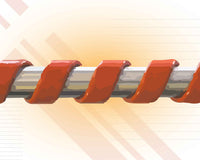Mobile home owners, look out below — the most vulnerable part of your trailer is often its underside. And if you’re not taking the necessary steps to protect it, you’re undermining your investment. Mobile Home Skirting is key to this effort, forming a barrier around your mobile home, between the trailer floor and the ground. It helps make your home look like your own and prevents critters from settling in and making your home their own. More importantly, it conceals your mobile home’s support structure (underpinning), wiring, and pipes while also helping to insulate and ventilate. In some states, going skirting-less is even against code.
Learning how to install mobile home skirting will ultimately benefit you in the form of decreased energy bills, pest control fees, and maintenance costs, all while keeping you in compliance with your local municipal and/or park regulations.
Introduction to Mobile Home Skirting
Mobile home skirting is a crucial aspect of mobile home maintenance, serving as a barrier to protect the undercarriage of the home from animals, debris, and harsh weather conditions. The primary function of mobile home skirting is to prevent moisture buildup, which can lead to structural damage and energy inefficiency. With proper ventilation and insulation, mobile home skirting helps maintain temperature consistency and shields your home’s underpinning from environmental stresses.
Mobile home skirting installation can be a DIY-friendly project, but it requires careful planning, precise measurements, and the right materials. Choosing the right skirting material is essential, as it can affect the durability, energy efficiency, and overall look of your mobile home. Vinyl skirting is a popular choice among homeowners due to its affordability, ease of installation, and low maintenance requirements. With the right approach, you can protect your home and save money in the long run.
Aside from the skirting material itself (typically vinyl, but many other materials can serve as skirting), you’ll need tools for:
- Measurement and alignment: tape measure, level/plumb bob, wooden stakes, and chalk line
- Cutting and resizing the skirting panels: tin snips and utility knife
- Affixing and securing to the frame: hammer, ground spikes and nails
It's important to understand the various components involved in the installation of mobile home skirting. Having all the necessary elements figured out can simplify the process and increase the likelihood of a successful installation.
A typical mobile home skirting package will consist of some combination of:
- Skirting panels : covers the vertical space between the ground and trailer floor)
- Ground tracks/rails (U-channel): the bottom perimeter of the skirting with a space for the panels to lock into
- Top back rail (J-channel): The top guide for the skirting panels — wraps around the bottom of the trailer (forming a J shape) and is affixed in place.
- Top front rail (trim): interlocks with the top back to secure everything in place and complete a cohesive look.
- Skirt guards: Protects the bottom of your skirting from the ravages of weed whackers and lawnmowers.
Choosing the Right Skirting Materials
When selecting skirting materials, homeowners should consider factors such as climate performance, budget and affordability, and personal preference. Vinyl skirting is a popular option due to its affordability and ease of installation, but other materials like wood, metal, and concrete can also be used, each with its own advantages and disadvantages. For instance, wood offers a natural look but requires more maintenance, while metal provides durability but can be more expensive. The price associated with using masonry materials such as brick or concrete for skirting options can vary depending on the size of the mobile home and the costs involved for installation by a contractor.
The choice of skirting material can affect the installation cost, with some materials (especially masonry materials such as brick or concrete) requiring professional help and specialized tools. Homeowners should review the different types of skirting materials, including their prices, durability, and maintenance requirements, before making a decision. It is essential to choose materials that match the existing skirting and structural elements of the mobile home to ensure a seamless and secure installation. By carefully considering your options, you can select the best material for your needs and budget.
It is important to acquire all the mobile home skirting you need in a single purchase, as slight variations in manufacturing conditions or the future availability of supplies could throw off your entire project. It'’s recommended you buy a little more than you need, to give yourself some margin for error.
To calculate how much skirting you need, add together the two widths and lengths of your home, plus the three sides of any porches or decks that may be jutting out from the trailer. Next, determine the average height of your home by taking measurements between the bottom of the trailer and the ground at all four corners and the middle of each of the longer sides. This comprehensive measurement approach ensures that you accurately calculate the average height needed for vinyl skirting. Divide the sum of those measurements by six.
Mobile home skirting installation procedure
1. Preliminary steps
First, ensure levelness of ground around the trailer. It is important to measure the height of the house, specifically a manufactured home, to determine the appropriate vinyl skirting needed. Use wooden stakes to define the corners of the perimeter, using your level or plumb bob to make they are aligned with the bottom of the mobile home. Snap a chalk line to draw the perimeter between the corner stakes.
2. Anchor the bottom rail to the ground
Clear the installation area of obstructions or debris, and position the back leg of the bottom rail just inside the chalk line you laid earlier. Then using ground spikes, anchor the bottom rail to the ground. The inner face of the rail should be parallel with the bottom edge of the mobile home along the perimeter. The U-channel is where we will insert our skirting panels.
3. Affixing the top back rail to the home
Using the chalk line to keep things straight and even, nail or screw the top back rail almost totally into place, leaving 1/16” between the screw or nail head and the surface of the rail. This allows for thermal expansion. Leave ½” between each back rail section for the same purpose.
4. Insert skirting panels
Insert the mobile home skirting panels into the U-channel of the bottom rail, using tin snips cut to fit. Use a square or measuring tape to mark off where the cuts must be made to ensure accuracy. Be sure that there is 1 foot of venting for every 150 feet of flooring; you want slits or holes that are big enough to facilitate airflow, but small enough to prevent critters from getting in. Proper ventilation is crucial as it helps regulate airflow and maintain temperature consistency, preventing moisture buildup and ensuring energy efficiency.
5. Install corner pieces
Corners are a little trickier to navigate, but you’ve got this! Measure the distance around the corner with your tape and mark the spot where the panel needs to bend. Use a straightedge and a utility knife to superficially score the piece so that it flexes more easily, being careful not to damage it (it’s okay if you do; that’s why you bought extra skirting panels!)
6. Lock everything into place with the top front rail
Slip the top front rail under the lip of the top back rail. Make note of top rail segments with a notch; these are for the corners.
Common Mistakes to Avoid
One of the most common mistakes in mobile home skirting installation is inadequate measurement, which can lead to incorrect panel sizes and a poor fit. Failing to secure the skirting panels properly can result in moisture buildup, structural damage, and energy inefficiency. Not using the right tools, such as a snap lock punch tool, can make the installation process more challenging and increase the risk of errors.
Homeowners should avoid proceeding with the installation without a clear understanding of the process and the necessary materials, including the skirting package and installation cost. It is crucial to follow a step-by-step guide and seek professional help if needed to ensure a successful and secure installation. By being aware of these common pitfalls, you can avoid costly mistakes and ensure your mobile home skirting is installed correctly.
Safety Precautions
When installing mobile home skirting, homeowners should take necessary safety precautions to avoid injuries and damage to the property. Using a plumb bob to ensure the mobile home is level and secure is essential before starting the installation process. Homeowners should wear protective gear, such as gloves and safety glasses, when handling tools and materials.
It is crucial to follow the manufacturer’s instructions for the skirting material and installation process to avoid any potential hazards. If homeowners are unsure about any aspect of the installation, they should consider seeking professional help to ensure a safe and secure installation. By taking these safety measures, you can protect yourself and your property during the skirting installation process.
Get your mobile home skirting in order with Star Mobile
Star Mobile Home Supplies offers an extensive array of mobile home skirting packages, tool and hardware kits, and more. Be sure to check our online store for the latest deals and savings.






